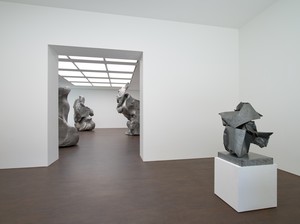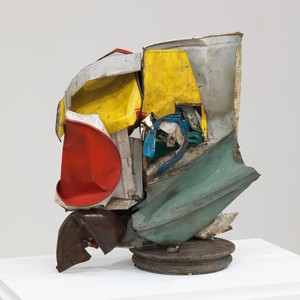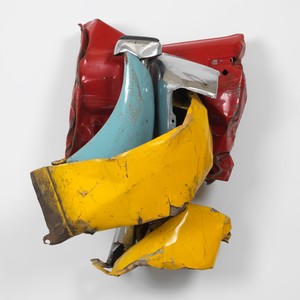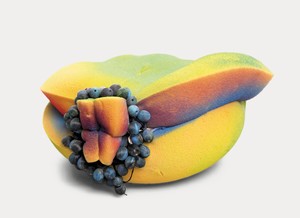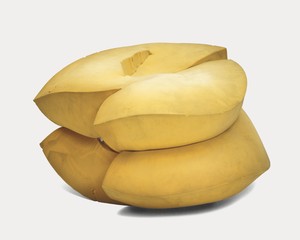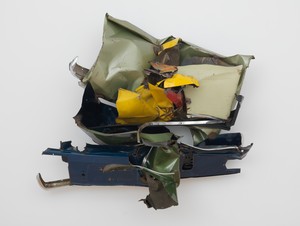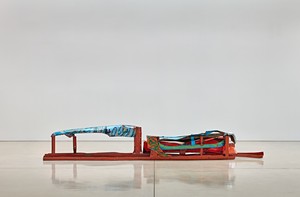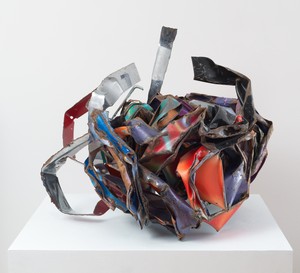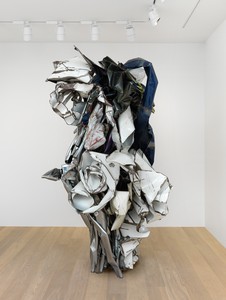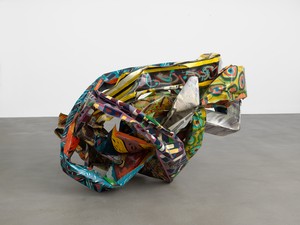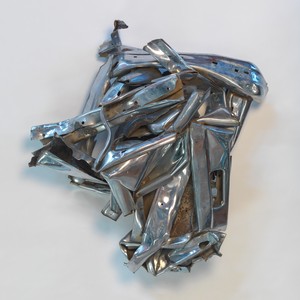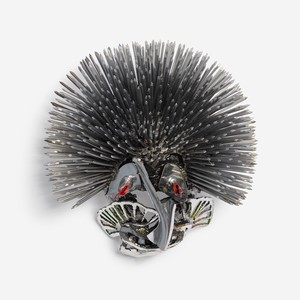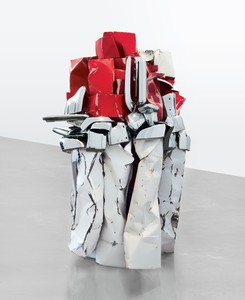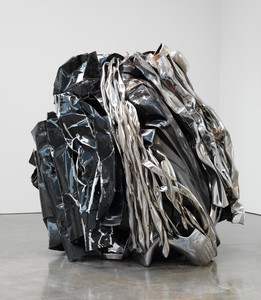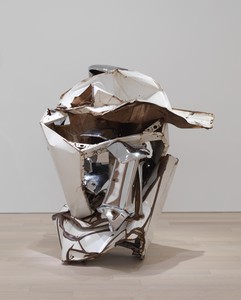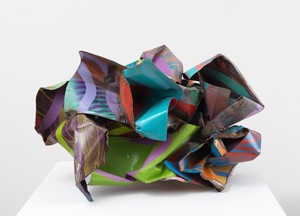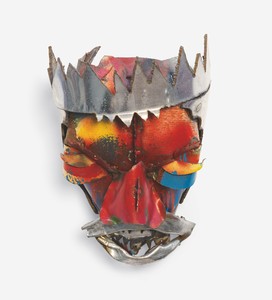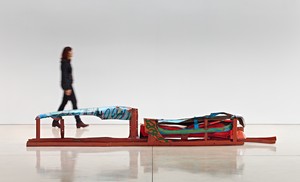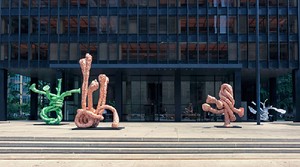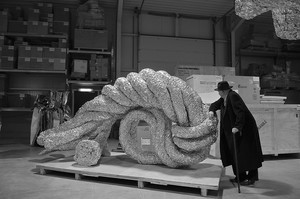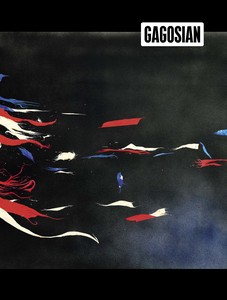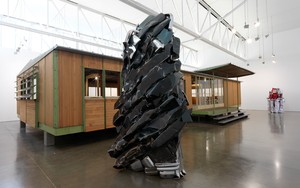In finding your place in sculpture, you need to find the material that offers you just the right resistance. As it turns out, car metal offers me the correct resistance so that I can make a form—not overform it or underform it.
—John Chamberlain
John Chamberlain’s (1927–2011) distinctive metal sculptures, often made of crushed automobile steel, reveal both the stately grace and the expressive plasticity of industrial materials. Exploring the interplay of color, weight, and balance, Chamberlain tapped into the energy of Abstract Expressionism, the premanufactured elements of Pop art and Minimalism, and the provocative folds of the High Baroque.
In the mid-1940s Chamberlain spent nearly three years aboard an aircraft carrier while serving in the US Navy. Traveling through the Pacific, Mediterranean, and Atlantic greatly influenced his sense of scale and viewpoint. Following his return to the United States, he studied at the Art Institute of Chicago (1951–52) and then at Black Mountain College in North Carolina (1955–56), where he fostered a keen appreciation for poetry and began to consider language as an integral part of his aesthetic approach.
Chamberlain moved to New York in 1956 and the following year made Shortstop, his first sculpture incorporating automobile parts. He continued to use this material, revealing the seemingly infinite formal potential of the shining chrome, flaking paint, hard edges, and voluminous folds. In 1961 his innovations led to his inclusion in the Art of Assemblage at New York’s Museum of Modern Art, where his sculptures were shown alongside Futurist, Surrealist, and Cubist works.
At the end of the 1960s Chamberlain began to incorporate galvanized steel, urethane foam, and mineral-coated Plexiglas into his work. Despite the physical differences of these materials, Chamberlain was consistent in his approach, constantly searching for the right “fit” and rearranging compositions until they “locked into place.”
Chamberlain returned to the nearly exclusive use of automobile parts in the mid-1970s, expanding his technique by cutting and painting the metal. Seeking a larger studio space with higher ceilings where he could expand the scale of his work, he moved from New York to Sarasota, Florida, in 1980. There he made the Gondolas (1981–82), long, low works often displayed in pairs or groups on the floor, like abstracted boats floating in a row. For the Giraffe series (c. 1982–83), he sandblasted painted car metal, removing the color in patterned, linear strips to reveal the raw surface beneath.
Chamberlain’s dynamic spatial abstractions extended beyond sculpture into film, photography, prints, paintings, reliefs, masks, and more. The Barges (1971–83), huge foam couches, form plush terrains in which visitors are invited to lounge. His colorized panoramic photographs, which he began in 1989, made using a moving camera, create abstracted scenes that the artist called “self-portraits of [his] nervous system.”
In 2007 Chamberlain began transposing miniature models crafted from aluminum foil into monumental outdoor sculptures. The resulting works, four of which were on view outside the Seagram Building, New York, in 2012, maintain the lightness, directness, and spontaneity of the fragile original models despite their stable, balanced forms. Some of the last works that Chamberlain made in his lifetime, the foil sculptures—with titles such as FROSTYDICKFANTASY (2008) and PINEAPPLESURPRISE (2010)—bring together the whimsical humor, technical mastery, and dynamic expression that run throughout the artist’s sixty-year career.
